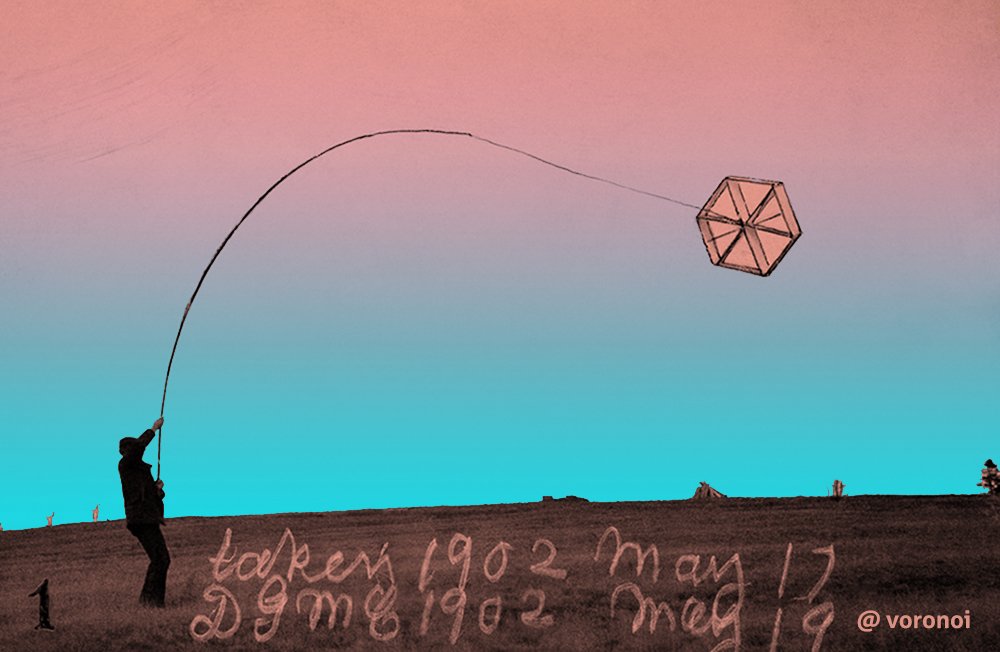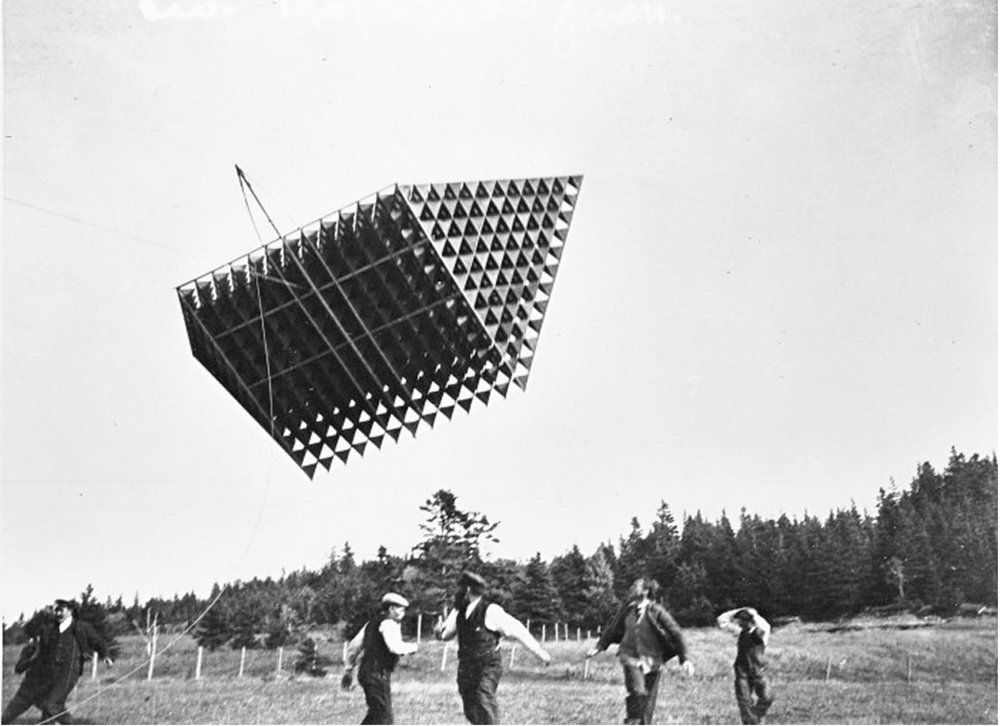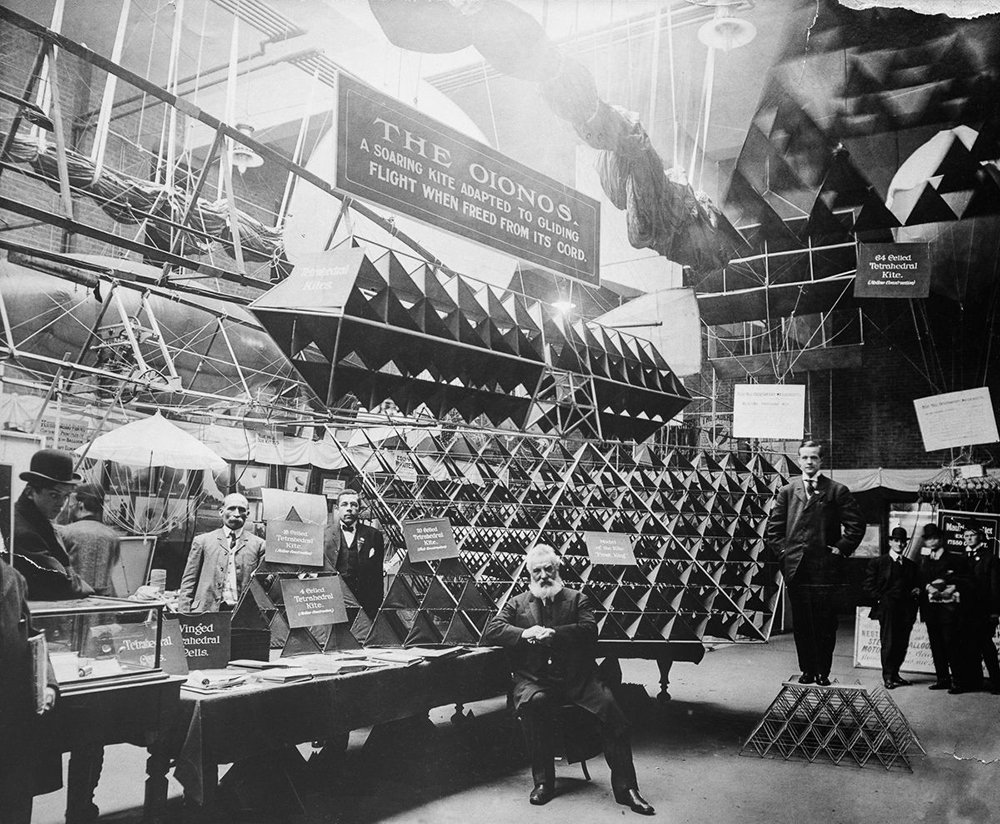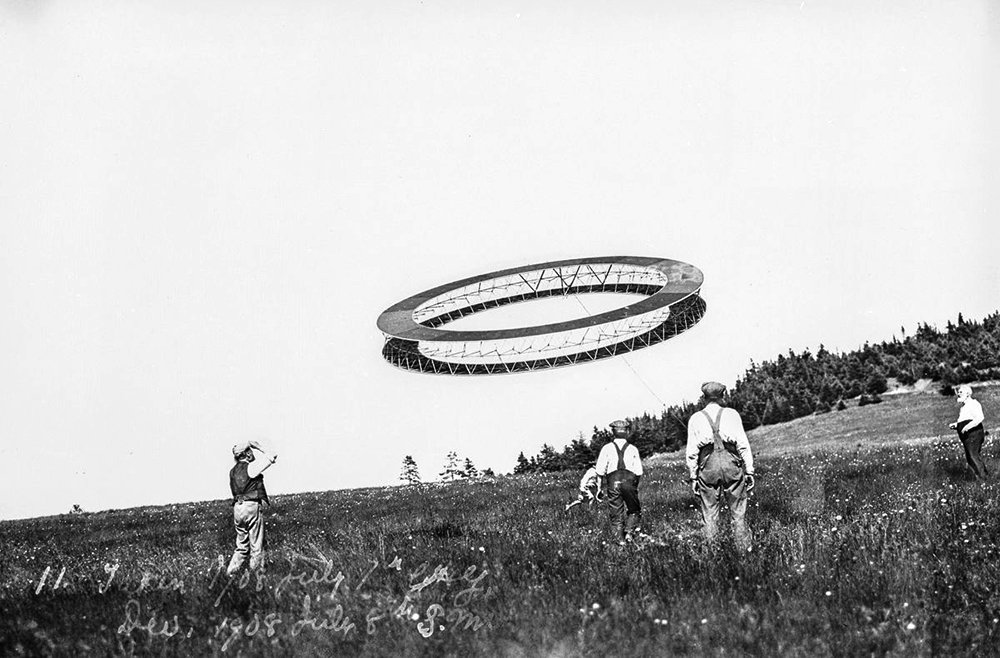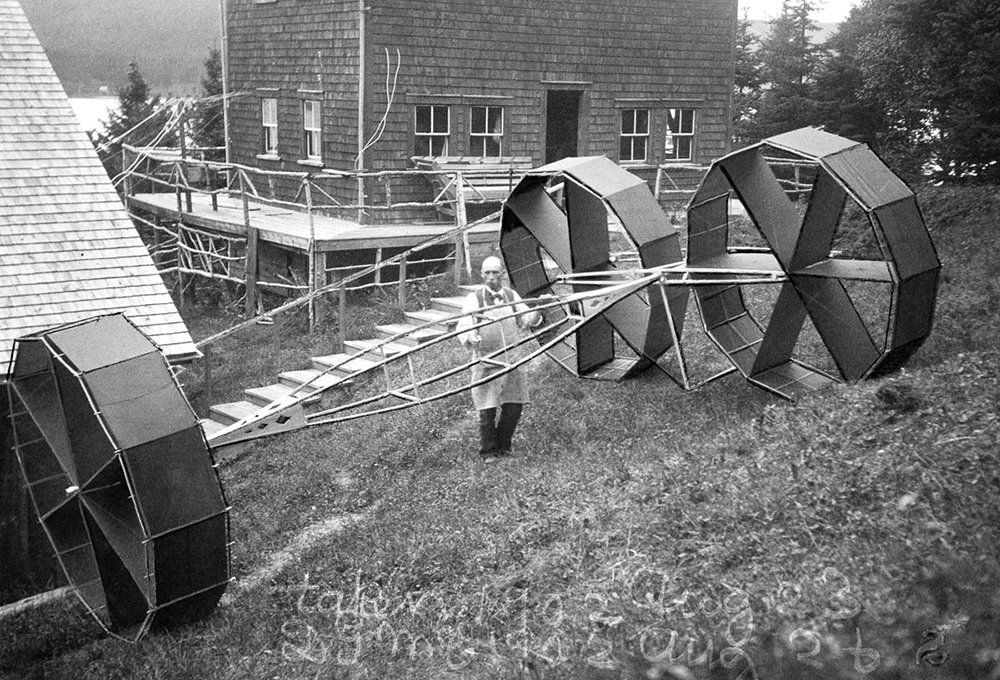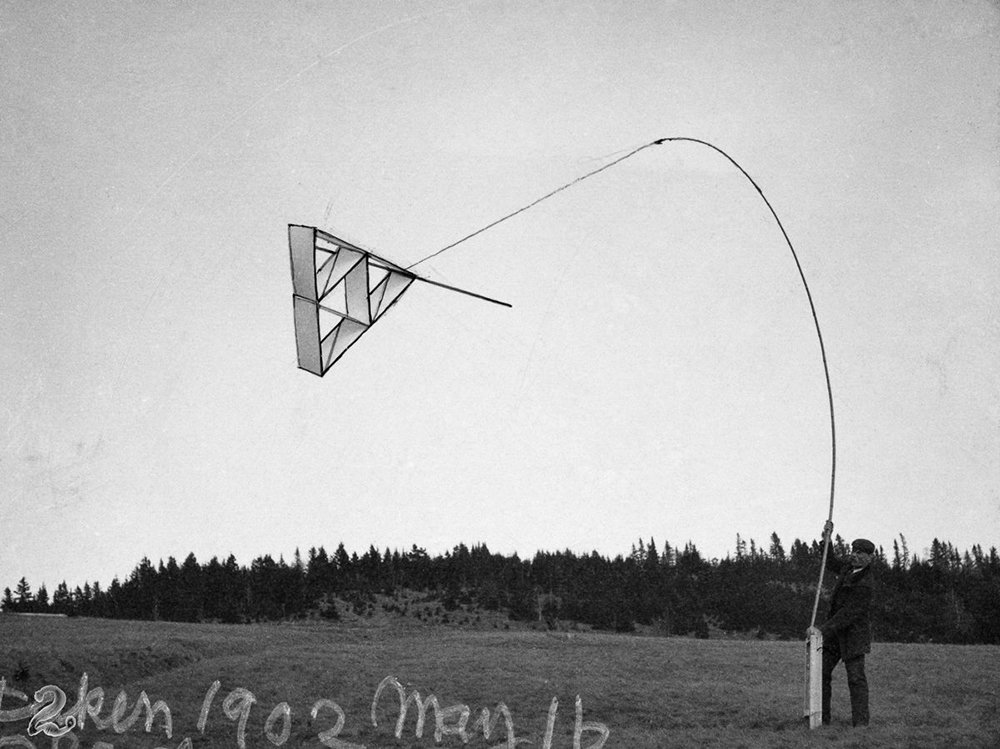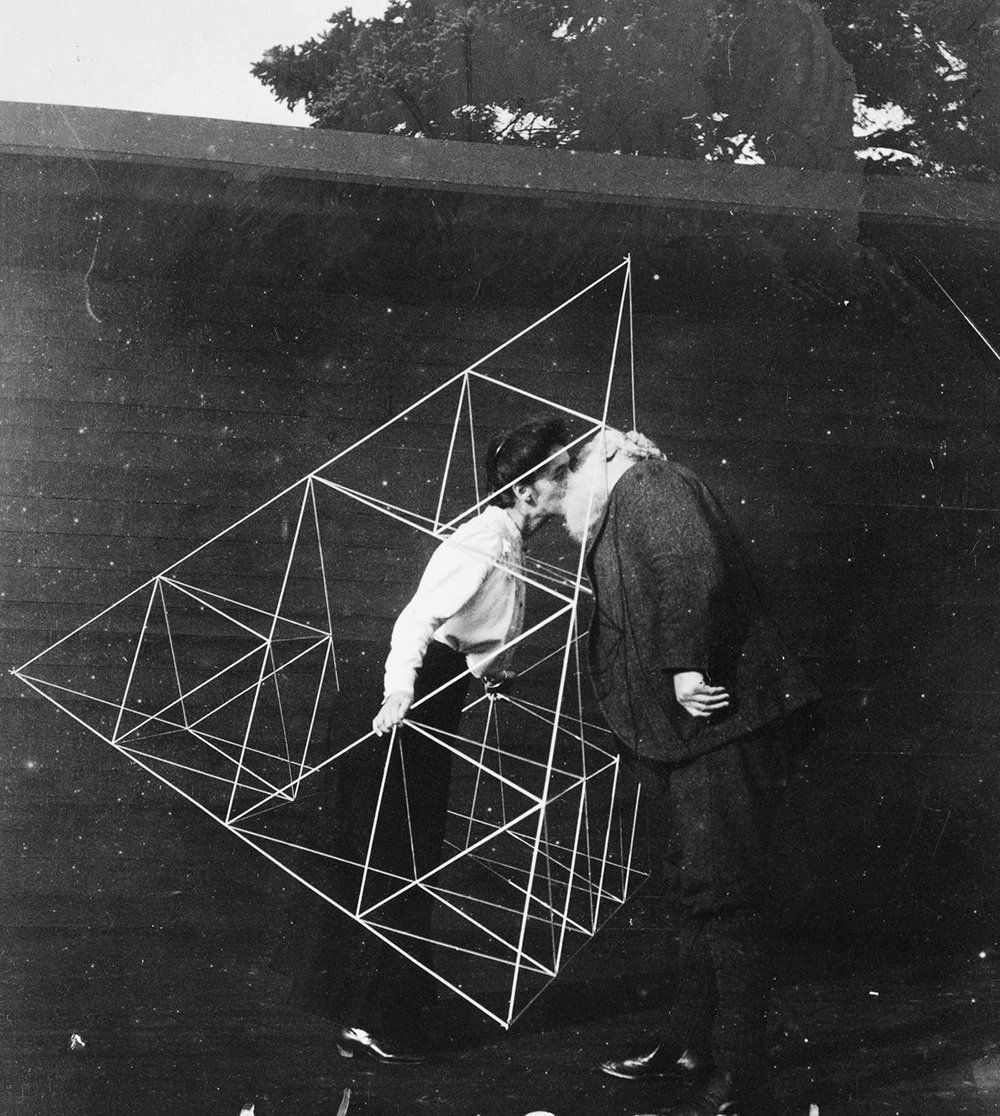A four sided object whose sides and base are all triangles - the “tetrahedron” was a geometry of interest when it came to early experiments in flight and renowned inventor Alexander Graham Bell. In 1876 Bell patented the telephone, surely the work he is most remembered for. However, he also invested the better part of two decades towards exploring the possibilities of flying machines...
Alexander Graham Bell and his Tetrahedral Kite, named “Frost King” (1904)
On a remote testing site in Nova Scotia - Bell’s lab explored the efficiencies and inefficiencies of airborne fractal geometries. Over the course of 15+ years Bell’s team created hundreds of large-scale geometric studies and exotic kite designs.
“Frost King” was a tetrahedral kite prototype composed of 1,300 cells made out of silk. Bell’s “King” reportedly lifted one of his assistants nearly thirty feet up in the air. (Possibly why everyone is running away, above.) The scientist, inventor, engineer, and geometry-lover continued to manipulate his box-kite designs with the hope of one day carrying a man inside.
“The tetrahedral principle enables us to construct out of light materials solid frameworks of almost any desired form, and the resulting structures are admirably adapted for the support of aero-surfaces of any desired kind, size, or shape.” - AGB in 1903
In 1907, Bell designed a massive version of the King that he called “Cygnet.” This flying-machine prototype contained 3,393 tetrahedral cells, which lifted a passenger 168 feet above the ground before crashing. (Cygnet visible below.) While the passenger survived, U.S. Army Lt. Thomas Selfridge later died in 1908 within a Wright Brothers test flight. Selfridge became the first person to die as a result of “airplane.”
With trial and error comes love and geometry. Below, Bell kisses his wife Mabel through a prototype tetrahedron.
Thumbnail image : a @voronoi collage based on a kite prototype photograph taken May 17, 1902. All image sources are through National Geographic Creative / Corbis.
For more musings on science + art + architecture...
